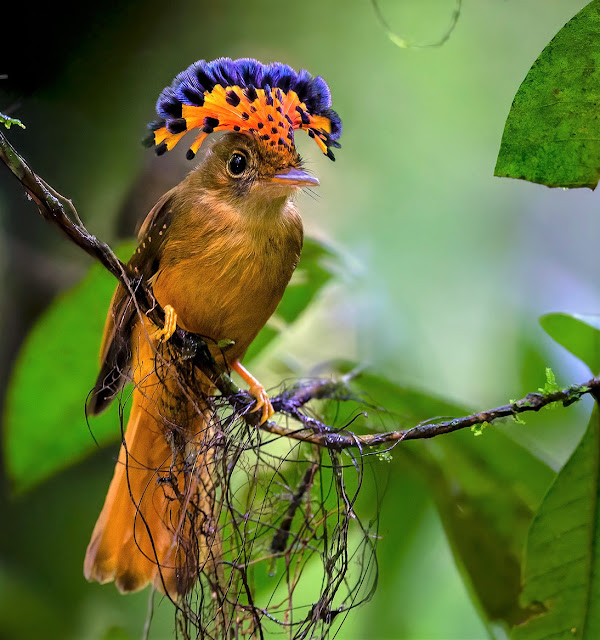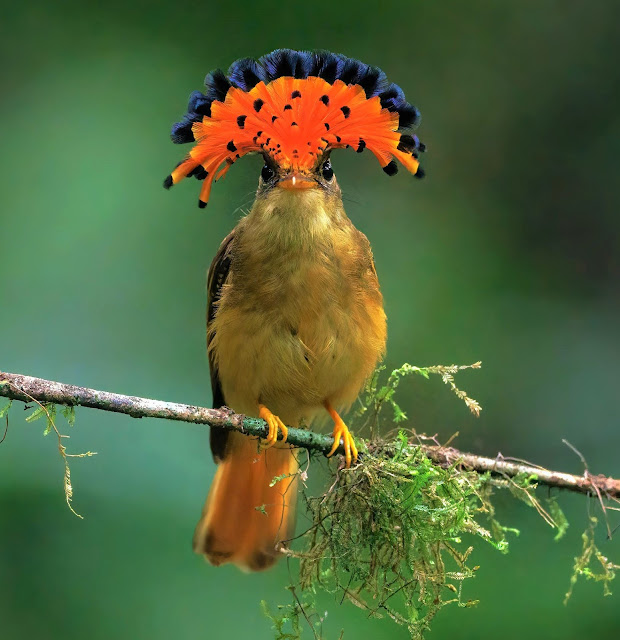Home Flycatcher Hidden Gem of Tropical Forests: The Atlantic Royal Flycatcher
Hidden Gem of Tropical Forests: The Atlantic Royal Flycatcher
Bird Of The World August 21, 2023 0
An amazing variety of animals, each with its own appeal and significance, beautify the natural world. A unique gem of the avian world among these is the little passerine bird known as the Atlantic Royal Flycatcher (Onychorhynchus coronatus), which is a native of the neotropical regions of Central and South America. The Atlantic Royal Flycatcher seduces both ardent bird watchers and casual onlookers with its spectacular appearance, unusual habit, and ecological significance.
 |
| The Atlantic Royal Flycatcher |
Appearance and Elegance:
The Atlantic Royal Flycatcher is well known for its elaborate plumage and regal demeanor. The male of the species, which is around 6 to 7 inches long, has a striking crown of long, glossy black feathers that cascade like an elaborate headpiece. It distinguishes itself from other flycatcher species by its distinctive cap that resembles a regal robe. Shades of white, gray, and black are used to decorate the rest of its body, creating a pleasing contrast that highlights its elegance.
Behavior and Courtship Displays:
Habitat and Distribution:
Ecological Role:
Conservation Status and Challenges:
 |
| Hidden Gem of Tropical Forests: The Atlantic Royal Flycatcher |
Frequently Asked Questions about the Atlantic Royal Flycatcher
1. How big is the Atlantic Royal Flycatcher?
The Atlantic Royal Flycatcher measures around 6 to 7 inches in length.
2. What is the diet of the Atlantic Royal Flycatcher?
The Atlantic Royal Flycatcher primarily feeds on insects and small invertebrates that it catches by making short flights from its perch.
3. Where can I spot the Atlantic Royal Flycatcher?
The Atlantic Royal Flycatcher is typically found in the neotropical regions of Central and South America, especially in tropical and subtropical forests near water sources.
4. How does the Atlantic Royal Flycatcher contribute to its ecosystem?
As an insectivore, the Atlantic Royal Flycatcher helps control insect populations, which is essential for maintaining the balance of the ecosystem.
5. What are the conservation challenges for the Atlantic Royal Flycatcher?
While not currently classified as globally threatened, the Atlantic Royal Flycatcher faces challenges due to habitat loss and degradation, underscoring the importance of habitat conservation.





Post a Comment